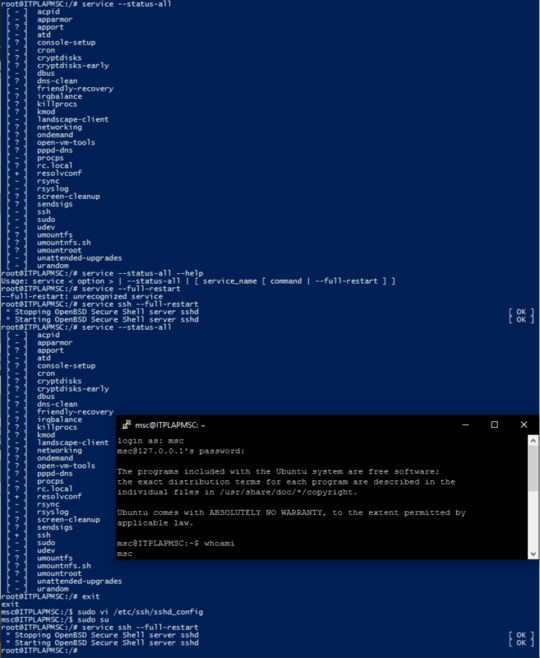106
72
I have Windows 10 Anniversary Edition with "Bash on Ubuntu on Windows" installed and working. I'd like to be able to SSH into this Ubuntu instance, but although I have openssh-server installed and configured (and listening on port 2200), when I try to ssh to "localhost:2200", it tells me "Server unexpectedly closed network connection".
Has anyone been able to successfully accomplish this?


Using Process Hacker and looking at the 'Network' tab, it shows sshd (running on Ubuntu on Windows 10) is listening on the 2200 local port. – Mick – 2016-08-09T15:08:09.880
and if you try to connect to the ip address of the system? Ubuntu often maps loopback addresses differently than windows does, and uses additional values in 127.0.0.0/8 (often 127.0.1.1) – Frank Thomas – 2016-08-09T15:29:12.533